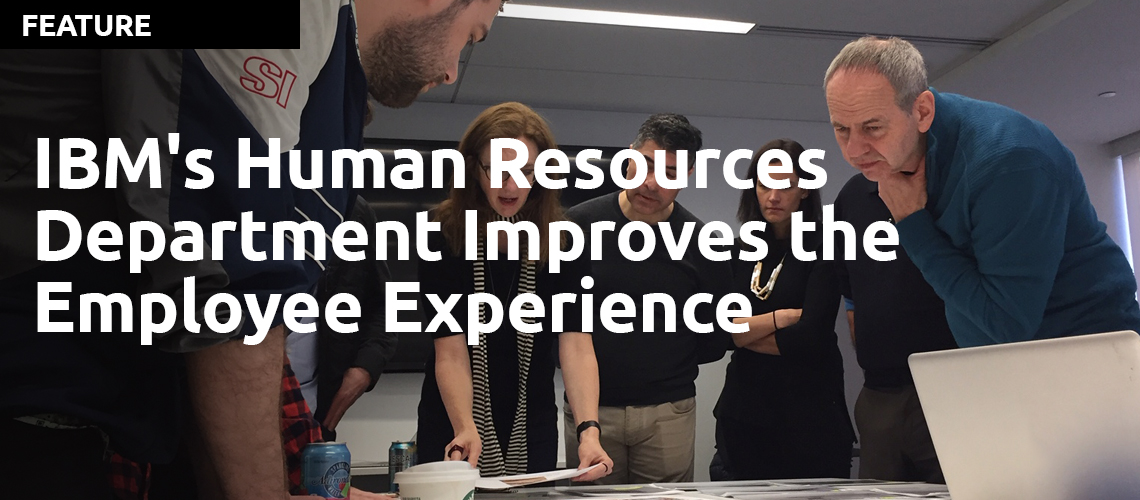
IBM is a multinational technology company that has been at the forefront of innovation and design thinking in many areas of their business, including their human resources (HR) function. IBM has recognized that to attract and retain the best talent, they need to create a workplace culture that is engaging, inclusive, and supportive. In this article, we will explore how IBM has used design thinking in their HR function to achieve these goals.
Design thinking in HR
Design thinking is a human-centered approach to problem-solving that focuses on understanding user needs, generating ideas, prototyping solutions, and testing them in the real world. It involves empathy, collaboration, and experimentation, and can be used to develop innovative solutions to complex HR challenges.
IBM's use of design thinking in their HR function began in 2013, when they started a pilot program to redesign their HR processes. The company's HR team worked with employees to understand their pain points and develop solutions that addressed their needs. The pilot program was so successful that IBM has since expanded its use of design thinking to other areas of their HR function.
One of the key elements of IBM's design thinking approach is empathy. IBM's HR team spends time with employees to understand their needs, challenges, and aspirations. They use a variety of tools and techniques, such as surveys, interviews, and focus groups, to gather insights and feedback from employees. This information is used to develop HR solutions that are tailored to the needs of employees.
IBM's HR design thinking process
IBM's HR design thinking process involves several stages:
-
Empathize: The HR team spends time with employees to understand their needs and challenges.
-
Define: The HR team synthesizes the information gathered during the empathize stage and identifies the key issues that need to be addressed.
-
Ideate: The HR team generates ideas for HR solutions that address the key issues identified in the define stage.
-
Prototype: The HR team creates prototypes of the HR solutions and tests them with employees.
-
Test: The HR team gathers feedback from employees on the prototypes and refines the solutions based on their feedback.
IBM's successes
IBM's use of design thinking in their HR function has resulted in several successes. For example, they have used design thinking to redesign their performance management process, resulting in a more streamlined and user-friendly experience for employees. They have also used design thinking to develop innovative talent management strategies, such as a career development program for high-potential employees.
IBM has also used design thinking to create a more inclusive workplace culture. They have developed diversity and inclusion initiatives that are based on the needs of their employees. For example, they have created a virtual mentoring program for women, which provides opportunities for networking, skill development, and career advancement.
IBM's failures
IBM's use of design thinking in their HR function has not been without its challenges. One of the main challenges has been the resistance to change from some employees and managers. IBM has had to invest significant time and resources in change management activities to overcome this resistance and ensure the successful implementation of their HR solutions.
Another challenge has been the need to balance the needs of different employee groups. IBM has a diverse workforce, with employees from different backgrounds, cultures, and geographies. Designing HR solutions that meet the needs of all employees can be a complex and challenging process.
Conclusion
IBM's use of design thinking in their HR function has been successful in creating a more engaging, inclusive, and supportive workplace culture. By focusing on empathy, collaboration, and experimentation, IBM has been able to develop innovative HR solutions that address the needs of their employees. While there have been challenges along the way, IBM's commitment to design thinking has helped them to stay at the forefront of HR innovation and create a workplace culture that attracts and retains top talent.
Here are some references to IBM's use of design thinking in their human resources function:
-
IBM. (2018). IBM Design Thinking: HR Redesign Case Study.
-
IBM. (2017). Design Thinking in HR: Empathy, Experimentation, and Empowerment.
-
IBM. (2018). How IBM Uses Design Thinking to Improve HR Processes.
-
HBR Ascend. (2019). How IBM Is Using Design Thinking to Transform HR.
